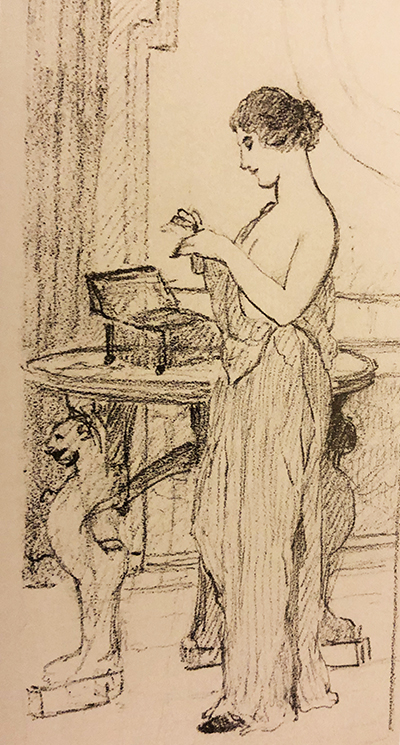Figurative portraiture require endless practice in order to master this challenging artistic genre and even the greatest names in world art would leave behind large numbers of study drawings where their craft was learnt.
John William Godward kept to a very narrow oeuvre during his career but even with the repetition of many elements from one painting to another, he still needed to complete considerable planning in order to create such beautiful paintings consistently. Historical accuracy was also something that he took very seriously, as was the attention to detail which was a key element of the Neo-Classicist movement as a whole.
The drawing displayed to the left is a study drawing completed by John William Godward in around 1914. It was in preparation for his upcoming oil painting entitled The New Perfume, of the same year. Comparing study sketches with the final painting offers an insight into the mind of the artist, such as displaying which parts of the composition he felt required the most attention during this planning stage. In this example the background is very feintly drawn, just to provide an element of layout.
Whilst the final painting was typically detailed, this drawing tends to focus most on the posture of the model, the way in which her outfit drapes from her body and also some of the detail on the ornate marble table that she stands besides. Perhaps this should not surprise us as a poorly delivered portrait, sitting in the centre of the composition, will be immediately noticeable and completely unrecoverable. It is a reminder of how even the finest portrait painters invariably felt the need to continue to perfect their skills right across the career, see also the drawings of Gustav Klimt and John William Waterhouse for further examples of that.




